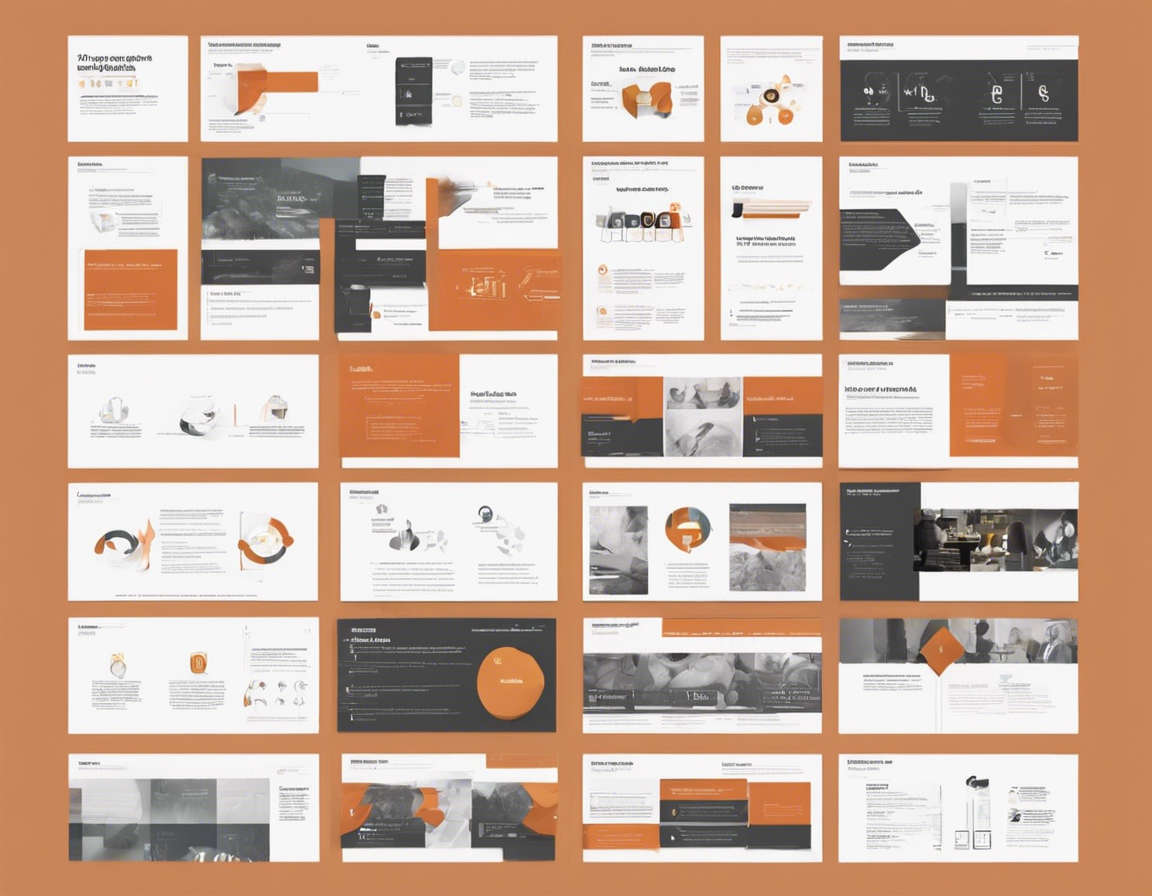PowerPoint presentations play a crucial role in various professional settings, ranging from boardroom meetings to academic lectures. One way to enhance the visual appeal and consistency of your presentation is by applying a design template to all slides. A design template, also known as a theme, helps maintain a cohesive look throughout the entire presentation and saves time by allowing you to customize multiple slides at once. In this comprehensive guide, we will explore the benefits of using design templates, step-by-step instructions on how to apply them, and some best practices to optimize your PowerPoint slides.
Benefits of Using Design Templates
Design templates offer numerous benefits that can elevate your PowerPoint presentation to the next level:
1. Consistency:
By applying a design template, you ensure consistency in the overall look and feel of your slides. This consistency helps the audience focus on the content rather than getting distracted by varied styles or colors.
2. Time-Saving:
Design templates enable you to streamline the design process. Instead of manually adjusting each slide, you can apply a template with just a few clicks, saving you valuable time.
3. Professionalism:
A well-designed template conveys a sense of professionalism and attention to detail. It enhances the credibility of your presentation and reflects positively on your work.
4. Branding:
For corporate presentations, using a design template that aligns with your company’s branding guidelines can reinforce brand identity and create a memorable visual impact.
5. Flexibility:
While design templates provide a consistent framework, they also offer flexibility for customization. You can tailor the template to suit your specific content needs while maintaining a cohesive look.
How to Apply a Design Template to All Slides in PowerPoint
Now that we understand the importance of design templates, let’s walk through the steps to apply a template to all slides in PowerPoint:
Step 1: Open Your PowerPoint Presentation
Launch PowerPoint and open the presentation to which you want to apply the design template.
Step 2: Access the “Design” Tab
Navigate to the “Design” tab located in the PowerPoint ribbon at the top of the screen. Click on the “Design” tab to access various design options.
Step 3: Choose a Design Template
Browse through the design templates available in the “Themes” group. PowerPoint offers a range of built-in templates, or you can choose to select a custom template saved on your computer.
Step 4: Apply the Selected Template
Click on the desired design template to apply it to your presentation. PowerPoint will automatically update all slides with the chosen template’s design elements, such as colors, fonts, and backgrounds.
Step 5: Customize the Design (Optional)
If needed, you can customize the design template further by adjusting colors, fonts, or backgrounds. The template serves as a foundation that you can modify to suit your preferences.
Step 6: Save Your Changes
Once you are satisfied with the design template applied to all slides, remember to save your presentation to retain the changes made.
Best Practices for Design Templates in PowerPoint
To make the most of design templates and create visually appealing presentations, consider the following best practices:
1. Choose a Clean and Professional Template:
Opt for a design template that is clean, professional, and complements your content. Avoid overly busy or distracting templates that may detract from your message.
2. Consistency is Key:
Ensure consistency in font styles, colors, and layouts across all slides. Consistent design elements help create a polished and unified presentation.
3. Limit the Use of Animations and Transitions:
While animations and transitions can enhance your presentation, use them sparingly. Too many animations can be distracting and take away from the content.
4. Use High-Quality Images:
If including images in your presentation, opt for high-quality visuals that align with your message. Blurry or pixelated images can diminish the professionalism of your slides.
5. Test Your Presentation:
Before presenting, preview your slides to ensure the design template appears as intended on different devices and screen sizes. Make adjustments as needed for optimal viewing.
Frequently Asked Questions (FAQs)
1. Can I create my own design template in PowerPoint?
Yes, you can create a custom design template in PowerPoint by designing a slide master with your preferred layouts, colors, and fonts, and then saving it as a template for future use.
2. Will applying a design template change my content?
Applying a design template in PowerPoint will not alter your content. It will only adjust the design elements such as colors, fonts, backgrounds, and layouts while keeping your text and images intact.
3. Can I change the design template after applying it to my presentation?
You can change the design template at any point in your presentation creation process. Simply select a new template from the “Design” tab, and PowerPoint will apply the new design to all slides.
4. Are design templates available in all versions of PowerPoint?
Design templates are available in all versions of PowerPoint, although the options and features may vary slightly between different versions. Ensure you explore the design tab for template options.
5. How can I ensure my design template is accessible and inclusive?
To create an accessible and inclusive design template, use high contrast colors, readable fonts, and consider accessibility features such as alt text for images to cater to diverse audiences.
In conclusion, applying a design template to all slides in PowerPoint is a simple yet powerful way to enhance the visual appeal, consistency, and professionalism of your presentations. By following the steps outlined in this guide and incorporating best practices, you can create impactful and visually engaging slides that effectively convey your message to your audience. Remember to choose a design template that aligns with your content and brand, customize it to suit your needs, and always aim for a polished and cohesive presentation.
